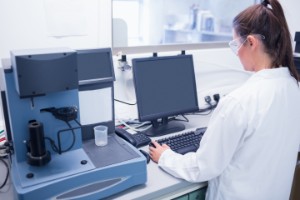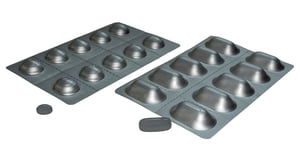Share this
immunosuppressant therapy monitoring: an overview
by Neoteryx Microsampling on Jan 6, 2020 2:52:00 AM
 When administering immunosuppressants, clinicians need to individualize a patient’s drug therapy. The goal is to attain an optimal balance between therapeutic efficacy and the probability of adverse effects.
When administering immunosuppressants, clinicians need to individualize a patient’s drug therapy. The goal is to attain an optimal balance between therapeutic efficacy and the probability of adverse effects.
Patients present varying pharmacodynamics and pharmacokinetics, so achieving this goal with immunosuppressant therapy monitoring can be challenging.
Early on, clinicians used analytical techniques to measure drug concentrations in biological fluids during drug treatment. However, the emergence of therapeutic drug monitoring (TDM) offered an opportunity to minimize the pharmacokinetic component of variability by managing drug therapy using concentrations in the body instead of dosages.
That’s why TDM is used before administering immunosuppressants. Drug concentrations in immunosuppressants can cause adverse effects on transplant patients.
Supratherapeutic drug concentrations, for example, put the patient at-risk of over-immunosuppression which leads to infection. Subtherapeutic drug concentrations can cause the recipient’s body to reject an allograft. This interindividual variability in drug concentrations creates the need for TDM.
 Immunosuppressants Needing TDM
Immunosuppressants Needing TDM
Factors that cause interindividual variability include:
- Drug-nutrient interactions
- Drug-disease interactions
- Gender
- Infection
- Inflammation
- Liver mass
- Renal insufficiency
Immunosuppressants that need TDM include:
- Cyclosporine – This immunosuppressant is used to prevent graft rejection in organ transplant patients. Cyclosporine has proven to be effective in improving long-term survival of solid-organ transplant patients. TDM of cyclosporine is essential because of:
- Drug-induced nephrotoxicity
- Inter/intra-patient variability of drug absorption
- Narrow therapeutic window
- Mycophenolic Acid (MPA) – MPA is effective at reducing acute organ rejection in heart, kidney, or renal transplant patients. MPA has also been used along with sirolimus and tacrolimus. Additionally, the drug has recently gained popularity as the primary component in long-term immunosuppressant routines.
However, TDM is essential when using MPA on post-transplant patients because of the interaction of drugs and its effect on kidney functions. Researchers should also consider inter-patient pharmacokinetic variability for MPA and the relationship between MPA and pharmacokinetic parameters. - Tacrolimus – Tacrolimus has a narrow therapeutic window. This drug exhibits large intra-/inter-individual inconsistency during pharmacokinetics assessment in liver and kidney transplant patients.
The patients display significant associations between high concentrations with nephrotoxicity and low tacrolimus concentrations with rejection. That makes routine TDM of whole blood concentration critical.
Why Microsampling is Important in Therapeutic Drug Monitoring
Just a few decades ago, conventional techniques such as venous blood sampling were used to obtain plasma or serum samples for TDM. With the invention of dried blood sampling, clinicians can enjoy a simple and convenient sampling method.
DBS (dried blood spot) sampling involves taking blood samples with a small finger prick using an automatic lancet. With the right setup, the right equipment, and adequate training, this can allow remote patient monitoring.
Mitra microsampling devices are the most convenient system for self-administered blood sampling for immunosuppressant monitoring.
Share this
- Microsampling (206)
- Research, Remote Research (119)
- Venipuncture Alternative (105)
- Clinical Trials, Clinical Research (83)
- Mitra® Device (73)
- Therapeutic Drug Monitoring, TDM (51)
- Dried Blood Spot, DBS (39)
- Biomonitoring, Health, Wellness (30)
- Infectious Disease, Vaccines, COVID-19 (24)
- Blood Microsampling, Serology (23)
- Omics, Multi-Omics (21)
- Decentralized Clinical Trial (DCT) (20)
- Specimen Collection (18)
- Toxicology, Doping, Drug/Alcohol Monitoring, PEth (17)
- Skin Microsampling, Microbiopsy (14)
- hemaPEN® Device (13)
- Preclinical Research, Animal Studies (12)
- Pharmaceuticals, Drug Development (9)
- Harpera Device (7)
- Industry News, Microsampling News (5)
- Antibodies, MAbs (3)
- Company Press Release, Product Press Release (3)
- Environmental Toxins, Exposures (1)
- July 2025 (1)
- May 2025 (1)
- April 2025 (2)
- December 2024 (2)
- November 2024 (1)
- October 2024 (3)
- September 2024 (1)
- June 2024 (1)
- May 2024 (1)
- April 2024 (4)
- March 2024 (1)
- February 2024 (2)
- January 2024 (4)
- December 2023 (3)
- November 2023 (3)
- October 2023 (3)
- September 2023 (3)
- July 2023 (3)
- June 2023 (2)
- April 2023 (2)
- March 2023 (2)
- February 2023 (2)
- January 2023 (3)
- December 2022 (2)
- November 2022 (3)
- October 2022 (4)
- September 2022 (3)
- August 2022 (5)
- July 2022 (2)
- June 2022 (2)
- May 2022 (4)
- April 2022 (3)
- March 2022 (3)
- February 2022 (4)
- January 2022 (5)
- December 2021 (3)
- November 2021 (5)
- October 2021 (3)
- September 2021 (3)
- August 2021 (4)
- July 2021 (4)
- June 2021 (4)
- May 2021 (4)
- April 2021 (3)
- March 2021 (5)
- February 2021 (4)
- January 2021 (4)
- December 2020 (3)
- November 2020 (5)
- October 2020 (4)
- September 2020 (3)
- August 2020 (3)
- July 2020 (6)
- June 2020 (4)
- May 2020 (4)
- April 2020 (3)
- March 2020 (6)
- February 2020 (3)
- January 2020 (4)
- December 2019 (5)
- November 2019 (4)
- October 2019 (2)
- September 2019 (4)
- August 2019 (4)
- July 2019 (3)
- June 2019 (7)
- May 2019 (6)
- April 2019 (5)
- March 2019 (6)
- February 2019 (5)
- January 2019 (8)
- December 2018 (3)
- November 2018 (4)
- October 2018 (7)
- September 2018 (6)
- August 2018 (5)
- July 2018 (8)
- June 2018 (6)
- May 2018 (5)
- April 2018 (6)
- March 2018 (4)
- February 2018 (6)
- January 2018 (4)
- December 2017 (2)
- November 2017 (3)
- October 2017 (2)
- September 2017 (4)
- August 2017 (2)
- July 2017 (4)
- June 2017 (5)
- May 2017 (6)
- April 2017 (6)
- March 2017 (5)
- February 2017 (4)
- January 2017 (1)
- July 2016 (3)
- May 2016 (1)
- April 2016 (2)



No Comments Yet
Let us know what you think